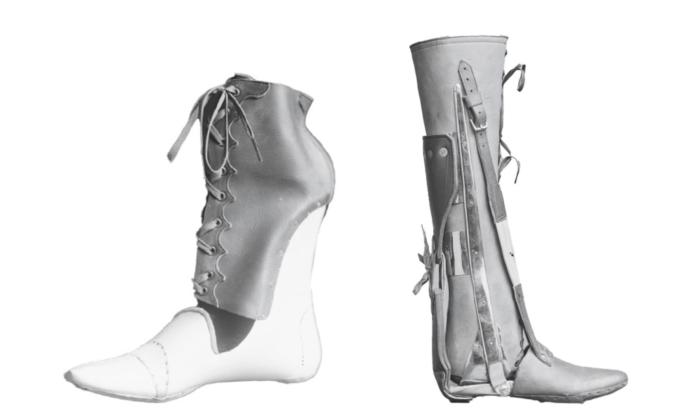Driving through the small town of Churchville, Virginia, it is easy to miss the historical marker dedicated to James Hanger. The house where he lived is gone. People whizz by on U.S. Highway 250, unaware of the man who changed the lives of thousands of wounded warriors. Hanger was born on February 25, 1843, and enjoyed a rather normal boyhood. Exhibiting a talent for engineering, he enrolled in 1860 in Washington College (now Washington and Lee University in Lexington, Virginia).
He was on his way to a promising career, excelling in his studies, when the Civil War broke out. Heeding the call of duty, he left school. James, his two older brothers, and four cousins enlisted in the Churchville Cavalry. It was in the first land battle of the war—the Battle of Philippi in West Virginia—that Hanger was seriously wounded. A 6-pound cannon ball struck his left leg near the knee, severely mangling the leg. To make matters worse, the injured young man was captured by Union forces and became a prisoner of war.
His injured leg was operated on by Dr. James D. Robinson and Dr. George W. New. It was amputated seven inches below the hip bone. Depending on which account of the story you find, Hanger was either the very first amputee of the Civil War or one of the first. The four-year war would result in more than 50,000 such amputations. Hanger spent several months in a Union prison before being returned to his family after a prisoner of war exchange in Norfolk, Virginia. Fitted with a peg leg, a straight wooden dowel strapped directly onto his stump, the young man faced an uncertain future.

Come to Grief
The cruel reality of amputation in the 19th century was that it took away one’s ability to do many of the things necessary to provide for a family. Hanger wrote of his experience:I cannot look back upon those days in the hospital without a shudder. No one can know what such a loss means unless he has suffered a similar catastrophe. In the twinkling of an eye, life’s fondest hopes seemed dead. I was the prey of despair. What could the world hold for a maimed, crippled man.The prosthetics of the day were expensive, awkward, and terribly uncomfortable. They didn’t allow amputees to work on a farm or in a factory. The Confederate Medical Department gave Hanger a prosthetic limb that was uncomfortable and practically useless. Despondent, the young man sequestered himself in an upstairs bedroom of his parents’ house.
He asked for some oak barrel staves, some bits of rubber, and some assorted nails. Some accounts record that Hanger said he was “going to do some whittling.” In any case, his family was surprised one morning when James descended the stairs on an amazing prosthetic limb that bent at both the knee and the ankle. The movement was far more natural than the prosthetics available in that day. James was able to walk successfully on it. He and one of his brothers decided that they needed to make the leg for other wounded soldiers.

Hanger Leg
The Hanger brothers opened up a shop in the nearby city of Staunton, Virginia, producing the “Hanger Limb.” The leg was comfortable, practical, and Hanger set out to make them affordable. He obtained his first patent for the leg (patent No. 155) from the Confederate Patent Office. He sent one of his prosthetic legs to the Association for the Relief of Maimed Soldiers, offering to produce them for a very reasonable price of $200 for those that went above the knee and $150 for below the knee. Dr. William Carrington, the Association’s secretary, was not immediately impressed.[It] is rude in workmanship, the color is unsightly, the toes are not fastened by hinges, the braces to the knee are too straight and not curved to the convexities of the knee—the sole leather thigh box is made of leather much too rough. … I am dissatisfied with the leg and hope you will not pass any more such, as they are a discredit to the Association and will be of little use to the men.Undaunted, Hanger refined his design and resubmitted it, becoming the leading supplier of artificial limbs for Confederate veterans.

As peace returned after the war, the J.E. Hanger Company greatly expanded. Thousands of veterans from the North and South sought out this wonderful product that gave them back their lives and livelihoods. The company opened a branch in Richmond, Virginia, and received a United States Patent (No. 111,741) for the leg in 1871.









